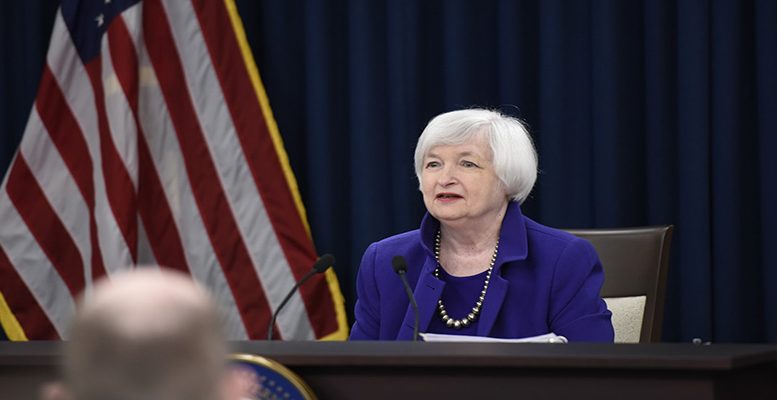Franck Dixmier, Global CIO Fixed Income (Allianz GI) | Investors could be forgiven for thinking they have been here before. As the clock ticks down on the US debt limit deadline, markets are once again getting familiar with the intricacies of US politics.
In what has become a semi-regular partisan wrangle, politicians in Washington are in talks over raising the federal debt limit before June, the month when the government could run out of money to pay its bills.
At stake is the ability of the world’s largest economy to continue to issue new debt and pay its bills. Such a scenario would involve the US defaulting on its debt, sending shockwaves through the global economy.
Little chance of default
First, the good news. We think there is only a 0.01% probability of default. This has never happened – and we don’t see it happening this time.
Markets seem to agree. The recent showdown between US President Joe Biden and the Republican-controlled House of Representatives has led to only limited market fallout so far.
One-month US Treasury Bill rates reached 5.44% on their recent peak on 19 May. US credit default swaps – market-based gauges of the risk of a government default – have eased from their peaks but remain volatile.
One reason why markets may be relatively sanguine is because investors probably feel they have seen this situation play out before.
Since 1917, the ceiling has been raised 78 times. The lack of agreement led to a government shutdown twice in 1995, for five and 21 days, and again in 2013 for 16 days. A partial shutdown in 2018 brought government services to a standstill for a record 35 days. In 2011, an agreement was reached two days before the deadline.
Yet the current context is different. Never has the political divide been so deep between the two parties. Never has brokering dialogue been so difficult. The point of tension? For the Republicans, it is their desire for a cut in federal spending. For the Democrats, it is their commitment to a costly energy transition programme.
At this stage, we envisage three possible scenarios: a last-minute agreement, a shutdown, or default. As noted, default is the least likely. Default would be disastrous for the US economy, leading to severe recession, financing difficulties and a lack of investment due to the rising cost of credit. The contagion would cause a global recessionary shock. In the long term, the consequences for US political and economic global leadership would be incalculable.
More likely: a shutdown scenario
Instead, we expect a shutdown scenario. With both parties sticking to their positions, we weight the probability of a last-minute agreement at only 40%.
More likely, in our view, is a scenario where politicians fail to reach an agreement in time to prevent a shutdown, before reaching an agreement swiftly after the deadline. We estimate a 60% likelihood of this scenario.
This latter scenario would be temporary as only part of the payments can be frozen. The US Treasury would then have to prioritise servicing the debt by cutting back on social spending, including unemployment benefits and social security, and by suspending the salaries of civil servants. In this scenario, the extremely high economic and political cost of such measures should push Republicans and Democrats to a quick agreement.
What does the debt ceiling uncertainty mean for markets?
For investors already grappling with questions about inflation and interest rates, the debt ceiling talks are another factor to navigate.
The situation will likely fuel the volatility of the US dollar and risk assets. Fresh market uncertainty will further dampen the growth outlook, reinforcing the idea that the US Federal Reserve has reached the high point in its interest rate rises. This environment should be favourable to US rates on the long end of the curve, and it supports our conviction to add duration to US rates on any pullback in Treasuries.





